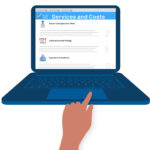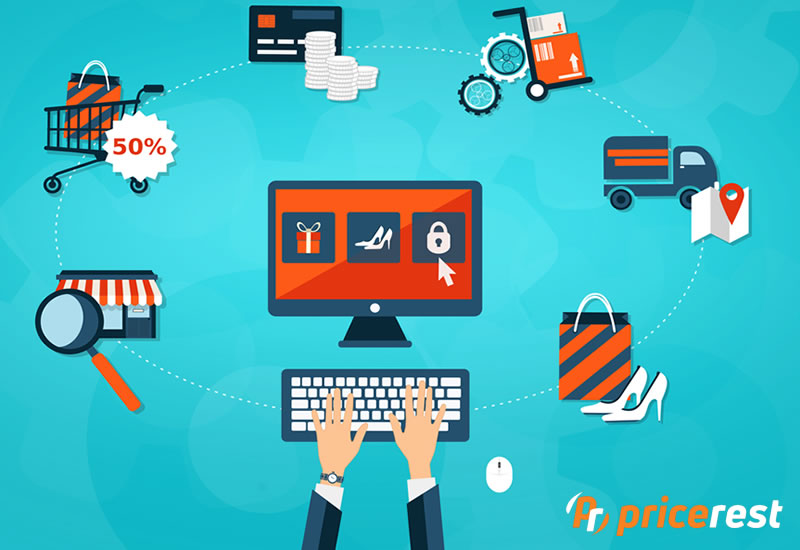Keeping an eye on pricing policies can be tricky in many different situations. With the advancements of e-commerce and the strong grounds of antitrust law, there can be many different ways to be seen as “illegal activities” when it comes to agreements with retailers.
The pricing policies of a brand should be monitored at many different levels. However, the best monitoring method for pricing policies is the one that is made by the brand itself. Having a good pricing policy can make a legally solid ground for any brand. Pricing policies that do not violate antitrust laws can create a solid background for brands. Keeping a clear pricing policy is possible with self-monitoring. Who is going to keep up with the price monitoring process can change many things during e-commerce processes?
Self Price Monitoring Procedures
 In the early days of e-commerce when there are no self-monitoring procedures, brand owners trusted their retailers to talk about policy violations of others. Most of the time, brand owners believed their retailers are monitoring their competitors’ prices for their business. The exchange of information between retailers and the brans was based upon retailers’ monitoring actions. When there were undercuts and policy violations, retailers were the ones who was the witnesses of such actions. Retailers were keeping an eye on their competitors to seek out any policy violations and reporting them to the brand. With the advancements in e-commerce and different styles of monitoring, there are still some retailers who are keeping an eye on their competitors to see if there is any policy violation. And retailers can benefit from brand loyalty programs by providing violation information regarding other retailers. However, solely trusting the retailers for seeking policy and price violations is a weak choice for preventing such actions. One of the biggest reasons for this is that retailers themselves can be the subject of such violation actions.
In the early days of e-commerce when there are no self-monitoring procedures, brand owners trusted their retailers to talk about policy violations of others. Most of the time, brand owners believed their retailers are monitoring their competitors’ prices for their business. The exchange of information between retailers and the brans was based upon retailers’ monitoring actions. When there were undercuts and policy violations, retailers were the ones who was the witnesses of such actions. Retailers were keeping an eye on their competitors to seek out any policy violations and reporting them to the brand. With the advancements in e-commerce and different styles of monitoring, there are still some retailers who are keeping an eye on their competitors to see if there is any policy violation. And retailers can benefit from brand loyalty programs by providing violation information regarding other retailers. However, solely trusting the retailers for seeking policy and price violations is a weak choice for preventing such actions. One of the biggest reasons for this is that retailers themselves can be the subject of such violation actions.
MAP Monitoring for such policy violations can be established by the brand for many different reasons. And with the advancements in e-commerce, they are not bounded to expect such monitoring actions from their retailers as well. With the right methods of monitoring their price policies, brand owners can be one step ahead of their retailers.
First of the reasons, agreements between brand owners and retailers can still be seen as tricky on many legal grounds. Since because there were many illegal agreements between retailers and brands back in the first days of e-commerce, there are still raised eyebrows about activities conducted by the retailers for brand owners. Despite there is a solid and unilateral pricing policy between the brand and retailer, some activities can be seemed as illegal for the “rule of reason”. Although it can change from country to country, brand owners should be careful with the agreements between themselves and their retailers. Any communication between the retailer and the brand owner can be presented to the court as evidence of an illegal agreement. It can be seen as an important illegal activity in the antitrust law. Even though there are no such signed papers and there is an only verbal agreement between the brand and the retailer, it can be presented as evidence to the court for illegal activity. This is the first reason why brand owners should not seek their retailers’ monitoring for their own pricing policies.
Promote Unfair or Uneven Enforcements
 The second reason for self-monitoring is about not to promote unfair or uneven enforcement. To keep up with the implementation of minimum advertised price (MAP) or resale price maintenance (RPM), brand owners need a thorough application of rules and policies. Relying on only retailers for reporting violations will not going to be enough to see every situation. Especially, when there are automatic changes in the prices, due to the advancements in e-commerce. With the advancements in technology, retailers can change prices automatically. Automated price changes can be made with advanced technology in a second. To keep an eye in such changes with every retailer can be difficult and time-consuming for manual monitoring. If there is no such automated self-monitoring system, it will be extremely difficult to seek out changes that are made during the night, on weekends, or on holidays. When a retailer reports a violation and the brand owner is taking an action against it without knowing who else made the violations can be seen as favoritism. Establishing sanctions for only a few retailers who got caught and not establishing any sanctions for the ones who got away with it is not a solid policy. To stay away from such favoritism-like behaviors, brand owners should seek for a solid, automated self-monitoring method. Even though the retailers can be a valuable sources for violation reporting, they should not be the only source.
The second reason for self-monitoring is about not to promote unfair or uneven enforcement. To keep up with the implementation of minimum advertised price (MAP) or resale price maintenance (RPM), brand owners need a thorough application of rules and policies. Relying on only retailers for reporting violations will not going to be enough to see every situation. Especially, when there are automatic changes in the prices, due to the advancements in e-commerce. With the advancements in technology, retailers can change prices automatically. Automated price changes can be made with advanced technology in a second. To keep an eye in such changes with every retailer can be difficult and time-consuming for manual monitoring. If there is no such automated self-monitoring system, it will be extremely difficult to seek out changes that are made during the night, on weekends, or on holidays. When a retailer reports a violation and the brand owner is taking an action against it without knowing who else made the violations can be seen as favoritism. Establishing sanctions for only a few retailers who got caught and not establishing any sanctions for the ones who got away with it is not a solid policy. To stay away from such favoritism-like behaviors, brand owners should seek for a solid, automated self-monitoring method. Even though the retailers can be a valuable sources for violation reporting, they should not be the only source.
Market Dominating Monopolies

Another reason for self-monitoring is not being seen as market-dominating monopolies. Trusting the retailers or general distributors to monitor prices can be seen as a restraining action for trade. Communication between brand owners and retailers can be seen as restraining action for market dominance. Retailers can advantage of this situation to kill the competition and it can break the antitrust law. If brand owners keep trusting in their retailers, they should be careful with the intentions of retailers as well.
Self-monitoring actions are also good for sustainable policies for brands. Retailers can seek for such violations to report. However, there is no guarantee that they will do such monitoring for brands forever. Self-monitoring methods can be seen as a reliable and sustainable process for pricing policy protection.
Lastly, if a brand cut deals with a retailer due to a report from another retailer, they can get sued. In such actions, if reporting retailer was not honest with the reporting, brand owners can find themselves in such troubles in court as well.
Trusting only retailers for price violation reporting can be tricky and unreliable for no good reason. Keeping an eye to all of the retailers on equal ground is the duty of every brand owner for better business. To stay away from illegal actions or doubt, every brand owner should seek their own monitoring process.
To have a solid, sustainable, automated, and advanced price monitoring system, join PriceRest today!

If you also want to monitor your retailers or sellers on e-commerce, join PriceRest today. And see What PriceRest can do for you.
Request a personalized demo of PriceRest
We look forward to showing you how our platform allows you to optimize the pricing, execution, and measurement initiatives that matter most to your brand and products.
It is Free!
What can I expect?
- A brief conversation to assess what PriceRest can do to help your pricing strategy
- Live product demo with insight into how to get the most benefit from PriceRest
- Discuss your prices KPIs to determine the best path forward for your business
- No commitment required
